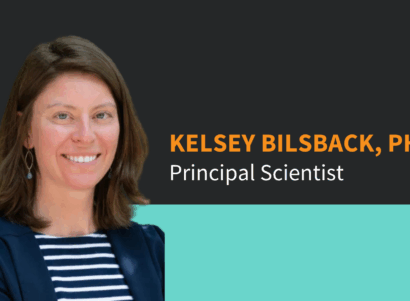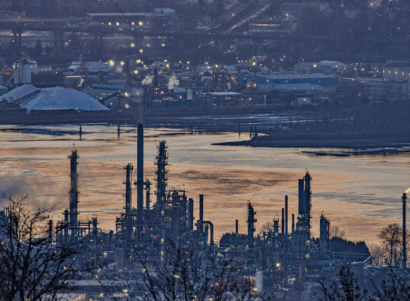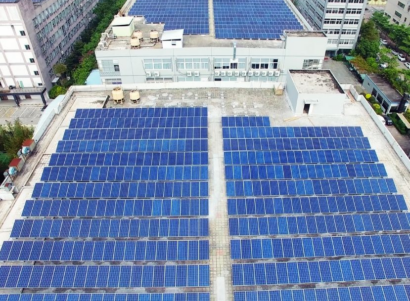Introducing the Community Consulting Center
From the coal mining towns of the Appalachia to the boomtowns of the Permian Basin, energy industries have far-reaching impacts on communities across the United States. Indeed, how regions source and generate electricity effects everything from utility bills to the health of local environments and populations. Despite their importance, many communities lack access to scientifically rigorous and regionally relevant information on the local impacts of energy systems. As climate change catalyzes profound shifts in energy systems, this information is essential to ensure that changes result in tangible benefits at the local level.
To help fill this gap, PSE Healthy Energy is launching a Community Consulting Center. Working together with community-based organizations and other local networks, our scientists are helping communities gain a deeper understanding of the energy systems and climate impacts shaping their communities. Research through the Community Consulting Center is designed to provide communities with access to applied research that is timely, locally-relevant, and easy-to-understand—allowing them identify effective solutions.
In this Q&A, we speak with PSE scientists about how the Community Consulting Center is helping to bring science to communities.

Q&A with PSE Senior Engineer Ana McPhail, PhD
How did the idea for a Community Consulting Center emerge?
Dr. McPhail: I think communities have always wanted to be more engaged in scientific research because there’s always been a desire for more information in respect to where we work, live, and play. After all, what’s more important than the health of your own family and your community? But historically, a lot of institutional research has been inaccessible and in some ways, that’s by design.
In school we’re taught that scientific research should be done by highly trained and educated classes of people, well-versed in technical nomenclature and the scientific method. Scientists increasingly agree, however, that community insight and involvement is an essential ingredient of holistic research. Getting community input early-on exposes researchers to new and critical perspectives, which in turn can lead to research questions that are more balanced and relevant on the ground.
What is the goal of the Community Consulting Center?
Dr. McPhail: Our goal is to give communities greater access to rigorous scientific analysis so they can better understand the issues that they care about. At its core, the Community Consulting Center is meant to facilitate a more holistic and inclusive approach to framing research questions. We start off by listening to community members’ experiences and perspectives. From there, it’s our job to help communities gain a deeper understanding of the scientific process. Not all questions can be answered with more data and research. As scientists, we can help communities identify what types of research questions have the greatest potential for impact in the real world. Based on the research questions we uncover together with communities, our scientists design research projects based on the best-available data and our in-house expertise.
Beyond the number crunching, how does PSE work with communities to make science more actionable and accessible?
Dr. McPhail: Communities want reliable information that they can act on. Through our Community Consulting Center, we design research projects to ensure that our results are easy to understand and easy to put to use. Practically, this means writing in plain language, being available and responsive to answer questions, and providing recommendations or developing tools that make our findings. That makes it easier for community groups to take our analysis back to their communities and put it to use.
What are some misconceptions you’ve heard on this subject that you’d like to correct?
Dr. McPhail: One misconception I sometimes hear is that communities won’t want real data analysis if it challenges their current views. In my experience, that’s simply not true. The groups I’ve worked with overwhelmingly want to understand the data and trends behind our analysis, even if it undermines their preconceptions. People want what’s best for their communities and information is power. With accurate and reliable information, people can make change in the right direction.
Another misconception is that this type of locally-focused analysis is too cumbersome to do with multiple stakeholders. That’s simply not the case. Having more insights from a variety of stakeholders actually strengthens the research and therefore the results and recommendations.
What about this work are you most excited about?
Dr. McPhail: There’s a long history of the scientific community extracting information from communities without reciprocity. Communities generally have had very few opportunities to partner with the scientific community. Helping to reverse that trend through collaborative research projects that deliver useful information in months, not years? That makes me super excited! It’s the kind of symbiotic relationship I’ve been pushing for throughout my career.
Case Study: Air Permit Review

Q&A with PSE Senior Scientists Kelsey Bilsback, PhD
Under the Clean Air Act, polluting facilities in the United States must apply for air quality permits, which air regulators review to ensure compliance with national ambient air quality standards. In May 2023, through our partnership with the Climate and Clean Energy Equity Fund, the Clean Up the River Environment (CURE) and Minnesota Environmental Justice Table organizations contacted PSE for an expert review of an air quality permit. Senior Scientist Kelsey Bilsback describes her work reviewing the air quality permit for the 18MW Wilmarth Biomass Power Plant located in Mankato, Minnesota.
Why was PSE contacted to help review an air quality permit?
Dr. Bilsback: The air permitting process includes opportunities for community engagement and feedback, but in practice it can be challenging to navigate. Permit documents are very long and full of jargon. It’s really dense content, even if you know the science well. Without an independent review, many communities may have to rely only on the permittees’ arguments about the risks to air quality and human health.
How did you support the air quality permit review?
Dr. Bilsback: My colleague Dr. Chowdhury Moniruzzaman and I provided an independent review of the air quality permit, as well as a high-level summary and recommendations for further action. In this particular case, there was limited easily accessible data on the air quality impacts of the facility in question, which made it harder to evaluate the company’s claims about the air quality impacts of their facility. Also, the direct health impacts of a facility are not always calculated as part of the permitting process, so we conducted additional modeling to assess these impacts.
According to the Minnesota Pollution Control Agency, the Wilmarth Biomass Power Plant is located in an “environmental justice area.” Based on a wealth of scientific evidence, we know that under-resourced communities tend to be exposed to higher levels of air pollution and are more vulnerable to the effects of air pollution. So knowing this, we decided to provide a summary of air pollution and energy equity considerations in the community surrounding the facility to assess how this plant was contributing to the cumulative pollution in the region.
What was the impact of this project?
Dr. Bilsback: Air permitting is designed to ensure that an emissions source does not significantly contribute to or cause an exceedance of the National Ambient Air Quality Standards (NAAQS). We hope that by providing independent review of air permits we can help increase access to the data and scientific knowledge communities need to improve their air quality.
Case Study: North Carolina Electric Cooperatives
Q&A with PSE Senior Data Scientist Yunus Kinkhabwala, PhD
Dr. Kinkhabwala: Electric cooperatives are private, non-profit companies that serve as an alternative to investor-owned electric utilities in many regions throughout the United States. Cooperatives are member-owned and operated and typically serve rural communities. In February 2023, Appalachian Voices contacted PSE for help understanding which customers in electric cooperatives are financially strained by energy bills and what actions utilities can take to reduce those energy bills. Senior Data Scientist Yunus Kinkhabwala describes the evolution of the project below. This work led to a subsequent analysis on energy resilience in North Carolina, previously discussed in our blog.
Tell us about your work in North Carolina. What was the original goal of the project and how did it evolve?
Dr. Kinkhabwala: There are a number of ways that utilities can help low-income households reduce their energy bills. For example, weatherizing homes can drastically lower heating and cooling bills and put several hundred dollars back into a typical household’s pocket every year. Appalachian Voices wanted to help electric cooperatives in North Carolina take advantage of existing funds and programs to save money for their most financially strained customers. To do that, they needed a better understanding of their customers’ demographics, homes, and household energy bills as well as how electrification, weatherization, and energy efficiency can bring down bills. Many cooperatives are quite small, and don’t necessarily have detailed analysis on their customer base or the capacity to perform such research, but since cooperatives are owned by their customers, helping them also helps save their customers money.
Using publicly-available demographic data for the state, we were able to map out the energy affordability challenges for electric cooperative customers and identify opportunities to reduce bills through programs such as demand response or community solar that are underutilized in electric co-ops. From there, we created a series of fact sheets outlining our findings for each cooperative in addition to an issue brief outlining affordability trends within cooperatives in the state. Appalachian Voices is now equipped to reach out to cooperatives and point out challenges that their customers face in paying their energy bills as well as opportunities the utility can take advantage of to reduce energy bills.
What did you find most interesting about this project?
Dr. Kinkhabwala: A lot of times people think energy poverty is concentrated in cities, but the data doesn’t bear that out. Lots of rural communities struggle to pay their energy bills. Because of the way electric cooperatives are structured, they do not have as much control over how energy is generated, but they can help customers use less energy, generate their own through community solar projects, or pay them to reduce their usage when energy is most in demand. All of these things add up and save their customers money. Our analysis is really about shining a spotlight on the issue of affordability and giving people the information they need to come up with solutions.
Explore more of PSE’s community consulting work on The Climate + Clean Energy Equity Fund‘s website.

















